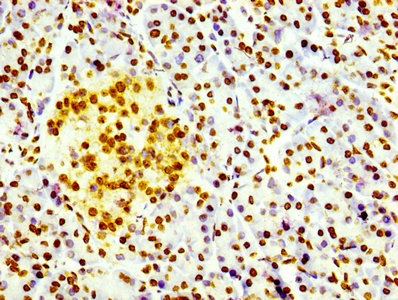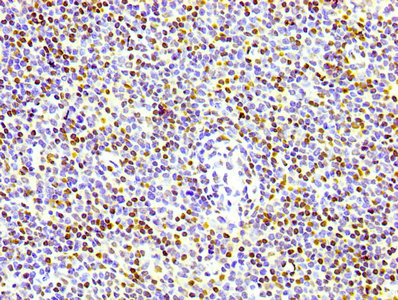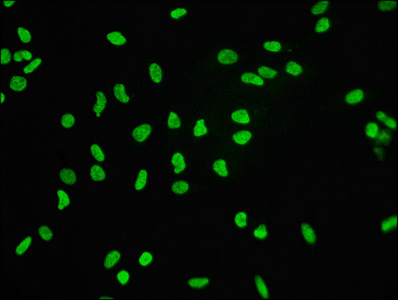To create the histone H3.3 recombinant monoclonal antibody, the process initiates with the isolation of genes responsible for coding the H3F3A antibody from rabbits that have been previously exposed to a synthesized peptide originating from the human H3F3A protein. These antibody genes are then meticulously integrated into specialized expression vectors. Following this genetic modification, the vectors are thoughtfully introduced into host suspension cells, which are diligently cultivated to encourage the production and secretion of antibodies. After this cultivation phase, the histone H3.3 recombinant monoclonal antibody undergoes a rigorous purification process using affinity chromatography techniques, effectively separating the antibody from the surrounding cell culture supernatant. Finally, the functionality of the antibody is comprehensively assessed through a battery of tests, including ELISA, IHC, and IF, conclusively confirming its capability to interact effectively with the human histone H3.3.
Histone H3.3 is a specialized histone variant that is dynamically incorporated into chromatin to regulate gene expression, DNA repair, and chromatin structure. Its distinct properties and functions make it a key player in various cellular processes, including development, genome maintenance, and gene regulation.








